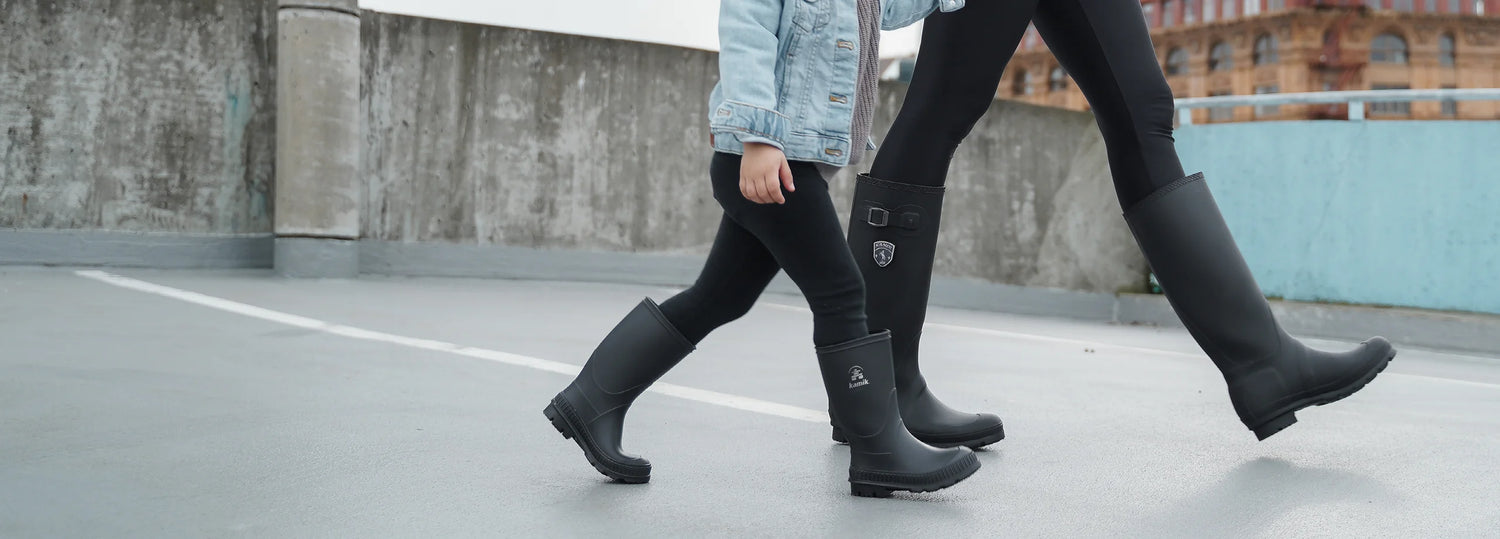At Kamik, we know that playing freely outside is incredibly beneficial for children. But we feel that kids today are missing out on the simple pleasures, games, and adventures we enjoyed outdoors during our childhoods—and we want to change that. That’s why we sat down with Dr. Peter Gray, a research professor of psychology at Boston College, to discuss the value of outdoor play and what we can do to bring it back into our kids’ lives.
Why Should Kids Play Outside?
Dr. Gray explains that play helps children build confidence and learn to solve problems, and they have more opportunities to do that outside. “There’s room to run, opportunities for adventure. I think part of play is adventure, getting lost. . . . It’s going to strange and somewhat dangerous places and all the excitement that accompanies doing that.”
The outdoors is also an ideal playground: “You can climb trees. There are all these playthings out there. You don’t have to worry about them breaking. You don’t have to worry about getting the carpet muddy.”
Is Unsupervised Outdoor Play Really More Beneficial for Kids?
“In our culture especially, adults almost always have an interfering effect on real play,” says Dr. Gray. “Outdoors, [kids] can at least in theory get away from adults. Unfortunately, we’re not giving children much opportunity to do that. We’re not allowing children out without adults accompanying them, observing them.”
Dr. Gray points to research comparing the behavior of children within the same age range as they played in parks—some under adult supervision, others independently, away from adults. “Where the children are playing independently, they’re playing more vigorously, they’re getting more exercise, they’re playing in risky ways, so they’re learning courage more. They are playing in more creative ways than when there’s an adult around. So, adults inhibit play. And that’s true even with the best of adults.”
How Can we Encourage Outside Free Play?
“What we need to work towards is having adult-supervised play where the adults are deliberately trained as play workers to not intervene,” says Dr. Gray. “They’re just there sort of like lifeguards on the beach.” Play workers don’t tell kids what to do or break up little squabbles; they only intervene in the event of a major safety risk. “Play workers in Europe are trained to do this, and there are more and more play workers in the United States.”
Adventure playgrounds—alternatives to traditional playgrounds where children can build and shape the environment as they please—are also creating more opportunities for uninhibited play. “In the typical adventure playground, parents are not allowed into the playground, but there is an adult there just to make sure that it’s safe enough.”
What Are Some Current Initiatives Aimed at Bringing Back Outside Free Play?
One initiative currently underway is Earth Day Canada’s EarthPLAY, a project dedicated to bringing self-directed outdoor play back into children’s lives by organizing play programs and events in schools, neighborhoods, and parks.
In the United States, Dr. Gray is involved with Let Grow, an organization working to create what it calls “capable kids communities,” where parents, schools, health professionals, government, law enforcement, and townsfolk work together to support kids’ outdoor independence.
Another program that has seen success is the play club run by the Patchogue-Medford school district in Long Island, New York. One morning per week, students of all grade levels meet for an hour of free play before the school day begins. Although children are monitored by their school’s faculty and staff, the adults do not interfere. Dr. Gray had a chance to observe one of these sessions firsthand. “There were 150 kids, K through 5, all mixed together, playing outdoors. It was raining a little bit, there were puddles. They could go anywhere they wanted. They could go outdoors, they could be in the gymnasium, there was a room with art supplies. . . . They were running in the hallways. I was delighted to see no one was stopping them from doing that.”
Dr. Gray also cites the example of Mike Lanza, author of Playborhood: Turn Your Neighborhood into a Place for Play. Lanza and his family turned the front yard of their home in Menlo Park, California, into a play area for the local kids: “They added a sandbox and a water play area and turned the driveway into a basketball court. . . . And so the Lanzas’ front yard became a neighborhood park. The kids got to know one another, and the parents gradually gained confidence as the kids were growing older.”
Of course, not everyone has a yard. But there are other possible solutions for encouraging free play at the neighborhood level. “In his book, [Lanza] describes other communities. . . . In an inner-city community, the moms got together and arranged to have the street closed off to traffic at certain hours and, interestingly, to have grandmothers sitting out there to make sure it was safe. Different communities can [find different solutions].”
Here at Kamik, we believe Dr. Gray’s message will resonate with parents. We also feel that seeing free play in action is one of the best ways to convince even more families of its benefits. Visit Kamik.com in 2019 to learn about the upcoming Kamik #FreeYourPlay adventure parks tour. In the meantime, sign up for the Kamik Club newsletter for tips, discussions, and activity ideas.
This interview has been edited and condensed.


